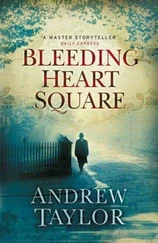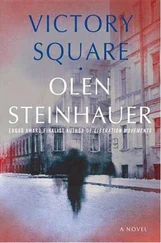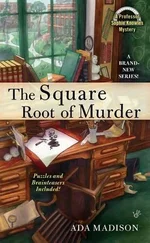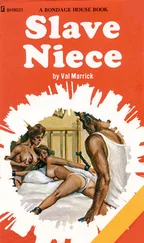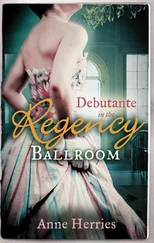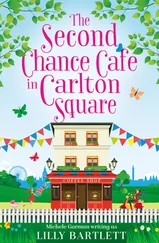Until day broke Darasa watched the crowd with a steely calm. Some of the lead rebels came early in the night to assure the monks of their unconditional safety. The four resident monks, a couple of them in a panic, asked Darasa to speak with them, but he saw no need. He told them simply to wait in their quarters as he was doing in his.
Rajasingha never emerged. In daylight the rebels found one of the king’s cannons in the village and thought to use it to breach the palace. Soon after they found one of his elephants and changed tack. The beast was whipped repeatedly, apparently to no effect, until finally, irate, it lunged through the palace doors. The building was deserted. They went to the back of it and found the trampled brush.
A party of thirty or so was dispatched in pursuit down the valley path. The senior rebel leaders — several were nobles familiar to Darasa — stood in the palace doorway and addressed the crowd. Having flushed the king from his palace, they thrust forth one of their number, an aristocrat not of Rajasingha’s bloodline, but of one dispossessed of any royal standing centuries earlier. He emerged from behind them and stood before the throng, looking on timidly.
In the village that day, the rebels celebrated, chanting in the streets. Word was sent out to the rest of the country that Rajasingha’s reign was finished, that a historical wrong had been righted. In the evening, many of them were put up by residents. Others squatted in the courtyard.
The next morning, the new king did not come out from the royal quarters of the palace. Eventually the guards opened the doors. The room was empty. He was searched for but never found. Perhaps he feared a counterattack from the former king. Or he may have simply had no interest in ruling. What was certain was that he was not the driving force behind the revolt, but a pawn of the rebel leaders, who were nobles without claim, however slight, to the throne.
News of his absence spread to the courtyard. In short order pledges to Rajasingha began to resound, first a few here and there, but soon everywhere, in a torrent, as rebels smoothly mutated into loyalists. Most of them took to proving their allegiance by murdering the rebels around them, declaring them traitors. By nightfall, the courtyard was tiled in bodies, as was much of the town. A smaller group remained, several dozen, all rabid loyalists by now, many nursing wounds from the melee.
News of the rebel collapse reached Rajasingha. But he did not return to the palace in Nillemby, preferring the securer location, Digligy, he found himself in now. In his stead he sent his men. The crowd, smaller still, as the wisest had fled, greeted the men warmly, cheering the king’s reign. Every one of them was dispatched, as was any local suspected of conspiracy. Nillemby was made a ghost town, except for the temple, which, as usual, was left alone.
The comet passed; order returned.
These events weren’t likely to find a home in the Chronicle, not like this. Darasa anyway had the feeling that much of the Chronicle existed subterraneously. This must partly have been a practical matter. A more detailed history, one that included all the smaller events occurring during a king’s reign, would have run to many thousands of pages; and the monks, especially the less scholarly of them, could not be relied on to know it thoroughly. Since common knowledge is what bound them as an order, a universal frame of reference was vital. The two Chronicles covered two thousand years. Keeping them to a manageable size meant excluding much, or rather, he thought, leaving much of their substance to be inferred.
Some of the exclusions had more interesting reasons behind them. The canonical mode of the Chronicles was tributary, an exaltation of kings and the kingdom they’d shepherded through the ages. To inscribe in it a failed rebellion in support of a noble with only the most tenuous claim to the throne would be to disrupt the sense of inevitability. It might suggest the fragility of both a king’s rule and the people he led.
In the island’s history there were four successful rebellions against reigning kings, where a leap of succession had to be written into the text, there being no other choice. But they were remarkable, Darasa thought, for always being understood as restorations of some earlier ruling bloodline, from which the new, heretofore unrecognized king invariably descended. The succession was merely a correction, a redress. So the arc of destiny, of narrative, remained undisturbed and the paean proceeded without interruption.
Had the recruited man been the brother of Rajasingha, even this failed rebellion might have qualified for treatment in the record, sibling rivalries for the throne being common and accepted, as they offered no real challenge to fate. In fact it was rumored that one of his brothers was in hiding in India or the North Country. He too might have walked away from the burdens of kingship. No one could say.
Might any of the four successful revolts have been driven by the people and not by the king-to-be and his claims to the throne? In two of the four cases, once in 400, and again in 1543, the Chroniclers describe not the motive force of the revolt, but only the justice of the outcome, in terms of the rules of legitimate succession. If these were in fact populist disruptions, it took no fabrication on the part of the Chroniclers, only omission, to mask that.
Reading the Chronicle, Darasa couldn’t help but feel, by the way certain events were skeletally described (as here) and others were repetitiously overattended (a king too lavishly praised); or by how a train of events suddenly yet artfully veered contrary to the momentum it seemed initially to carry; or by how in certain periods the priesthood’s doings are dwelled on, with little attention to the broader kingdom, that the monks had succeeded in suggesting a deeply variegated historical unfolding, an unthinkably complex narrative. Sometimes it seemed as if a passage, simply in its cadences, contained reverberations of something that rubbed against the surface gloss, though — and this was remarkable — without tarnishing it. These reverberations complicated each other as well, while others synchronized in surprising ways, deep beneath the text. Sometimes it felt to him as if five or six versions of two thousand years on the island were intertwined, with only one accented at any point. The pattern of emphasis, the cycling between dominant motifs, it could occur at intervals as short as a paragraph, sometimes even just a sentence, and as long as several chapters.
He wondered how he might freight his portrait of Rajasingha’s reign with the pressures exerted on it by this stillborn rebellion. What would be his glowworm spark? Whatever thread it linked with — perhaps with more than one, or perhaps the various narratives could be taken as a single motley unit, a dissonant chord — it would have to be expressed through a pattern of muteness. But the means escaped him.
“I like this,” kames said, holding stagg’s essay in his hand. He was standing on his balcony at the Wintry Institute in a cardigan and corduroys, a cigarette, a boutique brand, it looked like, burning down between his fingers. The sun silvered his gray hair as a light wind mussed it. “I like this but I wonder if it serves.”
Stagg held the wrought iron rail with both hands, the weight of his frame on them. Three stories down, eucalyptus and oak trees running along the eastern edge of the lawn brought shade to the pond, turning its water black.
Kames had taken no more than three drags of the cigarette. He might have taken just one. Mostly it sat between his fingers as he talked.
“You’d like to deliver this piece first,” he said. “It’s not that it isn’t interesting. But it’s almost a meditation — never mind the pun — on historiography. That will be good to get into, but it seems a complicated place to start. Better, I think, to give us some history to work with, before we confront how it becomes history.”
Читать дальше


